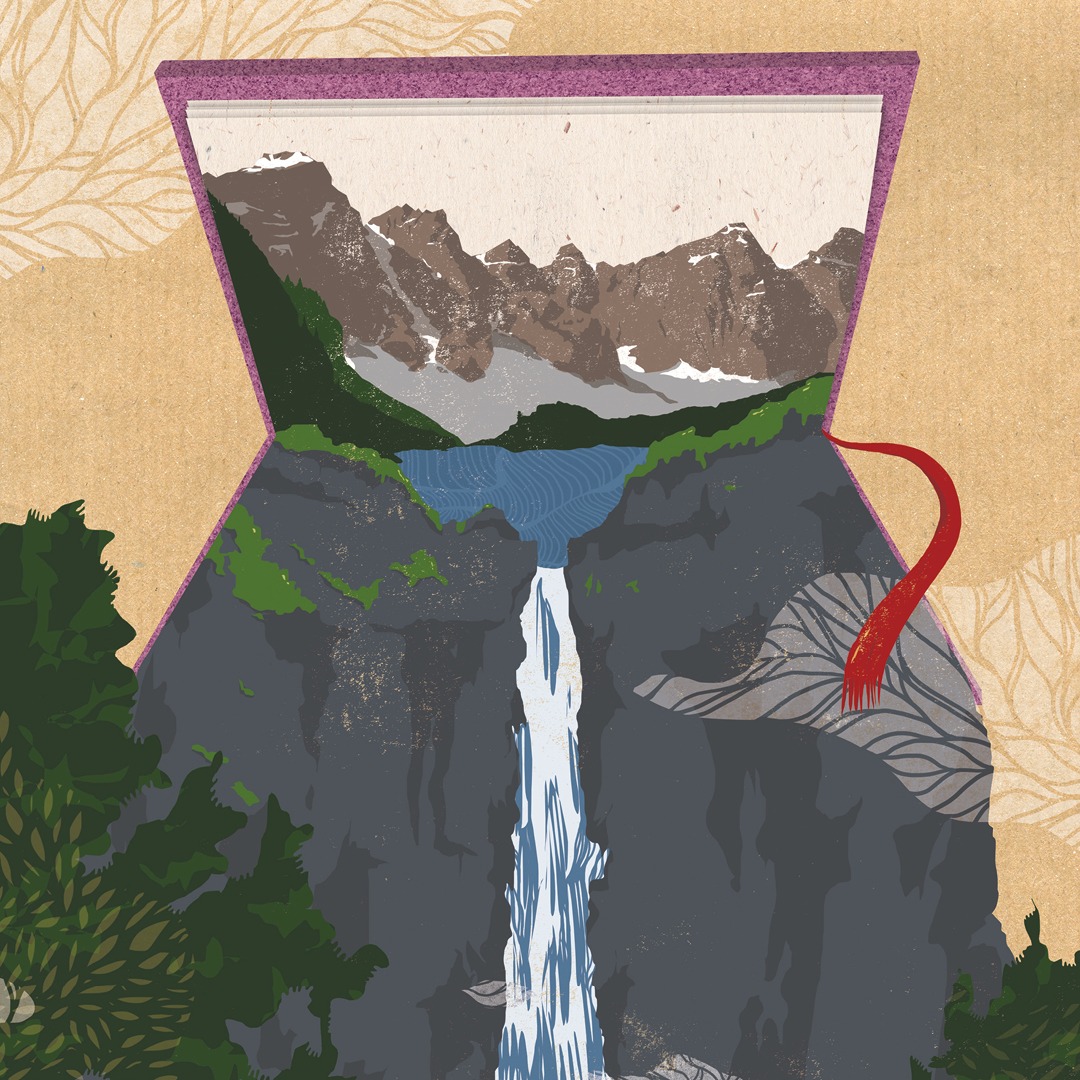One of my notebooks is labelled ‘Compost Heap’. It’s where I jot down thoughts, stick in pictures and save interesting articles that have caught my eye. I use it to scrawl mind maps of ideas that come to me out of the blue, usually when I’m trying to fall asleep. The writing is spidery and hasty, done in half-light with drooping eyes while I try not to wake my husband.
I’m not thorough in my jottings. I don’t record everything I encounter that’s of interest, but I do add to my book all the time, not least because ideas can disappear otherwise. Trying to grasp at them when you’ve missed the moment is like trying to catch smoke.
Take note
In his book The Imagination Muscle: Where Good Ideas Come From (and How to Have More of Them), Albert Read explores how people have recorded ideas through the millennia. He shares that he has a terrible memory so immediately writes down his thoughts or uses technology such as the Notes app on his iPhone to capture them: ‘Roald Dahl always said that if you have an idea, you should write it in the fog of a windscreen or you should inscribe it on the bark of a tree, otherwise these moments are gone.’
This is not least because ideas often come at inopportune times, not when you’re sitting poised with your pen. As Albert says: ‘These kind of moments, annoyingly, particularly seem to happen when you’re moving, walking or even when you’re in the shower. They arrive in the spaces in between – moments when you’re not fully engaged with what you’re doing and your mind is allowed to float.’ In his book, Albert writes about how, famously, one of Newton’s best ideas came when he was lounging under a tree, and how the words to Careless Whisper popped into George Michael’s head when he was at a bus stop.
Once captured, ideas in my book can remain unlooked-at for days, weeks, months or even years. Then, one day, I’ll open that page and a seemingly random jotting suddenly becomes something more. While vegetating in my compost heap, it’s taken root and a leaf is emerging from the page, ready to be nurtured. Sometimes, I discover a fully fledged plant, just waiting to be brought into the sunshine.
So, how does the magic happen? Psychologist Dr Sally Eccleston, who’s based in Derbyshire in the UK, believes that the key is to leave the idea alone to germinate once you’ve noted it down. She explains: ‘Time and space do tend to bring clarity in a more natural way, especially when combined with practices that help you actively manage your thoughts. Time is most effective when combined with conscious effort to create mental space, prioritise and take action. It’s a good idea to step away from ideas occasionally.’
Even after we’ve turned the page or shut a book, our subconscious will continue working on the idea. Then the conscious mind will kick in. It could be prompted by something you’ve read that connects the dots or, suddenly, another, correlated idea forms. ‘The most successful minds, in a creative sense, are minds that can oscillate between allowing this kind of bubbling stream of unconscious, unfiltered, messy thoughts to becoming an editor, who can take on that disorder and create order,’ explains Albert. ‘There will be nuggets that need to be refined and polished.’
Sally agrees: ‘When we’re in the thick of brainstorming or problem-solving, we’re too close to the ideas to see them clearly. This is why it’s a good idea to take breaks from the ideas you’re working with. Let them rest for a while and revisit them later. You may find that some ideas have faded in importance, while others become more clearly defined.’
For me, it’s often a case of timing. An idea might have lacked a hook when I wrote it down, but then something appears in the news that fits. Confidence also comes into it. An idea might feel ill-formed or simply not quite there yet. At the age of 92, author John McPhee decided to ‘describe in capsule form the many writing projects that I have conceived and seriously planned across the years but have never written’. The result was a tome called Tabula Rasa. There were many reasons why these ideas were half-formed or abandoned. Reviewing the book for the Times Literary Supplement in the UK, Tom Seymour Evans writes: ‘There are episodes illuminating the roles played by obstructive corporate subjects, by editorial politics, by faltering inspiration, by the need to make money and… by articles that turn out to be nothing more than seductive titles: “Rockaway, Babylon”.’
But even as a heap of disjointed ideas, John’s curatorial project has proved that his notebooks have power. Albert writes at length about so-called commonplace books, which were a popular feature of 18th-century life. Just like my compost heap, these books gave people a place to record their ideas. Now, as found items, they tell of historical events, as well as the trends and concerns of the moment. And they also have personalities. ‘The great pleasure of them is they accumulate over time,’ says Albert. ‘You discover things about yourself by looking back on what you wrote many years before, and you make new connections with your former self, as it were. I like this idea of being a different person at different points in your life, connecting them and then finding interesting points of contact.’
My compost heap isn’t a diary, but it does offer glimpses into what I was concerned with at a particular point in time. This offers a wider view of what was happening in my world – or even the wider world – at the moment I put pen to paper.
This particular notebook is where I deposit thoughts to clear my head, and it’s also where I come for inspiration when my mind is feeling empty. It’s where I can sometimes find that essential dot to link the other dots that are swirling around my brain. It sits there on my shelf, with its battered cover and the words ‘Compost Heap’ now grubby and faded. Maybe, like John, I’ll build a collection of these notebooks over the decades. Maybe, one day, one of my children will flick through and find a sprouting idea to plant for themselves. This is a place where I tend my imagination and let ideas sleep or grow. I always find such beauty and comfort when I open its dog-eared pages.
Making the most of your compost heap
- Scribble down your thoughts, then close your book. You don’t need to write down the idea and then ruminate on it. Let your mind do its magic.
- Don’t record with any expectation. Not everything in your book will bloom into something. Not every idea is destined to become a song, a novel or a poem.
- Don’t let self-doubt stop you from writing down an idea. Albert notes: ‘A lot of good ideas are reached through a process of having lots of bad ideas. I think that’s true of every kind of invention, whether it’s a physical invention, a story, a piece of music or a philosophy. All these things are arrived at through taking lots of wrong turnings.’
- Albert writes about how our public persona – what we project on social media, for example – can cause us to self-censor ideas: ‘We constantly weigh the risk of saying something because the consequences are much greater than they used to be. I think that’s a limiting factor on people’s development.’ The compost heap is yours, and yours alone. Ideas can live there until you feel comfortable sharing them. You might never share them. Time can bring confidence and also bravery. Remember that some ideas are disruptive and might cause turbulence, but that’s okay.
- When I write down a new idea, I’ll have a glance through everything I’ve noted down before it. This is often the moment that something leaps out – that glimpse of a green shoot amongst the scribbles. Try it and see what happens.
Find out more about Sally at wellnesswithsally.com. Albert’s book, The Imagination Muscle, is out now and published by Constable


